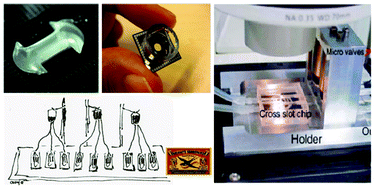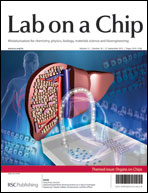Workshop meeting report Organs-on-Chips: human disease models†
Abstract
The concept of “Organs-on-Chips” has recently evolved and has been described as 3D (mini-) organs or tissues consisting of multiple and different cell types interacting with each other under closely controlled conditions, grown in a microfluidic chip, and mimicking the complex structures and cellular interactions in and between different cell types and organs in vivo, enabling the real time monitoring of cellular processes. In combination with the emerging iPSC (induced pluripotent stem cell) field this development offers unprecedented opportunities to develop human in vitro models for healthy and diseased organ tissues, enabling the investigation of fundamental mechanisms in disease development, drug toxicity screening, drug target discovery and drug development, and the replacement of animal testing. Capturing the genetic background of the iPSC donor in the organ or disease model carries the promise to move towards “in vitro clinical trials”, reducing costs for drug development and furthering the concept of personalized medicine and companion diagnostics. During the Lorentz workshop (Leiden, September 2012) an international multidisciplinary group of experts discussed the current state of the art, available and emerging technologies, applications and how to proceed in the field. Organ-on-a-chip platform technologies are expected to revolutionize cell biology in general and drug development in particular.

- This article is part of the themed collection: Organs on a Chip 2013

 Please wait while we load your content...
Please wait while we load your content...